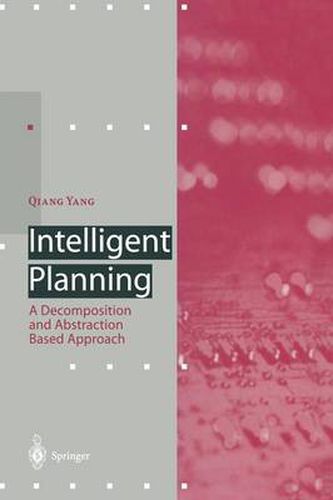Readings Newsletter
Become a Readings Member to make your shopping experience even easier.
Sign in or sign up for free!
You’re not far away from qualifying for FREE standard shipping within Australia
You’ve qualified for FREE standard shipping within Australia
The cart is loading…






This title is printed to order. This book may have been self-published. If so, we cannot guarantee the quality of the content. In the main most books will have gone through the editing process however some may not. We therefore suggest that you be aware of this before ordering this book. If in doubt check either the author or publisher’s details as we are unable to accept any returns unless they are faulty. Please contact us if you have any questions.
The central fact is that we are planning agents. (M. Bratman, Intentions, Plans, and Practical Reasoning, 1987, p. 2) Recent arguments to the contrary notwithstanding, it seems to be the case that people-the best exemplars of general intelligence that we have to date do a lot of planning. It is therefore not surprising that modeling the planning process has always been a central part of the Artificial Intelligence enterprise. Reasonable behavior in complex environments requires the ability to consider what actions one should take, in order to achieve (some of) what one wants and that, in a nutshell, is what AI planning systems attempt to do. Indeed, the basic description of a plan generation algorithm has remained constant for nearly three decades: given a desciption of an initial state I, a goal state G, and a set of action types, find a sequence S of instantiated actions such that when S is executed instate I, G is guaranteed as a result. Working out the details of this class of algorithms, and making the elabora tions necessary for them to be effective in real environments, have proven to be bigger tasks than one might have imagined.
$9.00 standard shipping within Australia
FREE standard shipping within Australia for orders over $100.00
Express & International shipping calculated at checkout
This title is printed to order. This book may have been self-published. If so, we cannot guarantee the quality of the content. In the main most books will have gone through the editing process however some may not. We therefore suggest that you be aware of this before ordering this book. If in doubt check either the author or publisher’s details as we are unable to accept any returns unless they are faulty. Please contact us if you have any questions.
The central fact is that we are planning agents. (M. Bratman, Intentions, Plans, and Practical Reasoning, 1987, p. 2) Recent arguments to the contrary notwithstanding, it seems to be the case that people-the best exemplars of general intelligence that we have to date do a lot of planning. It is therefore not surprising that modeling the planning process has always been a central part of the Artificial Intelligence enterprise. Reasonable behavior in complex environments requires the ability to consider what actions one should take, in order to achieve (some of) what one wants and that, in a nutshell, is what AI planning systems attempt to do. Indeed, the basic description of a plan generation algorithm has remained constant for nearly three decades: given a desciption of an initial state I, a goal state G, and a set of action types, find a sequence S of instantiated actions such that when S is executed instate I, G is guaranteed as a result. Working out the details of this class of algorithms, and making the elabora tions necessary for them to be effective in real environments, have proven to be bigger tasks than one might have imagined.